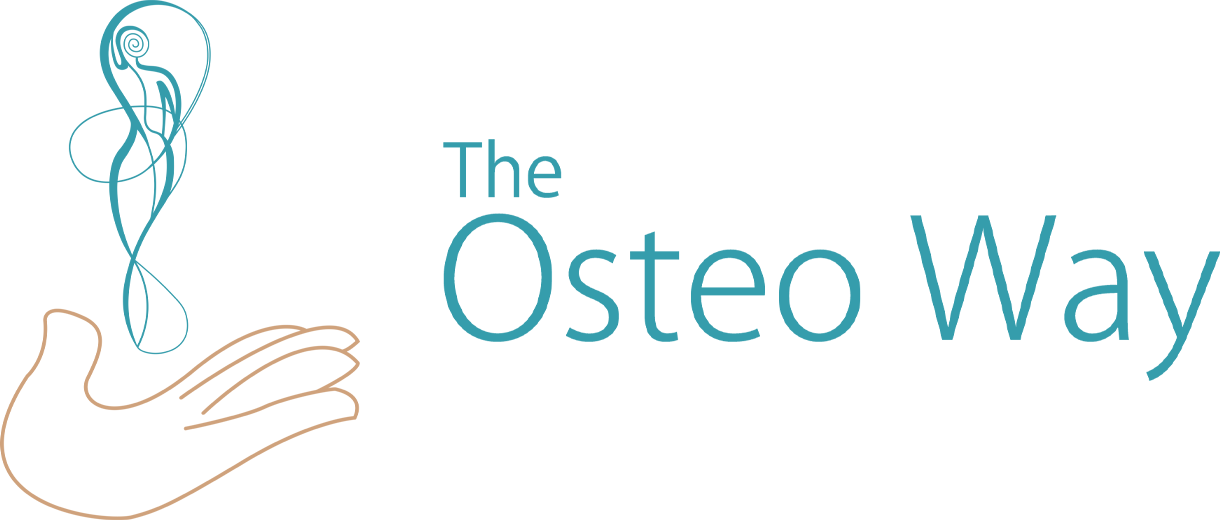Osteopathy is for people who want to treat the cause of their pain instead of patching the symptoms with a band-aid.
Osteopathy can help people from all walks of life, from athletes to elders, pregnant women, babies and kids. We each have different health issues creating adaptations in the body, and these manifest differently throughout the various stages of life. A trained Osteopathic therapist is equipped to treat many of these different pains and health problems as they arise in their patients.
We get asked all the time “what do Osteopaths do?” The simple answer is that we use a variety of manual therapy techniques to assess and then treat you in a way that focuses on rebalancing your body’s natural mechanisms such that your health increases and takes the place of the illness or dysfunction. In short, Osteopathic manual therapists replace illness with health, inside your body.
Exactly how does an Osteopathic manual therapist do this?–what does an Osteopathic manual therapist do to rebalance your body and increase your health? The answer to this is more complex because the Osteopathic manual therapist’s toolbox is not limited to one particular type of technique the way that a chiropractor’s or a physiotherapist’s is. There are many different branches of Osteopathy, including structural Osteopathy, visceral Osteopathy, and cranial Osteopathy, each with their own sub-types of the practice that involve their own specific style of Osteopathic manipulations.
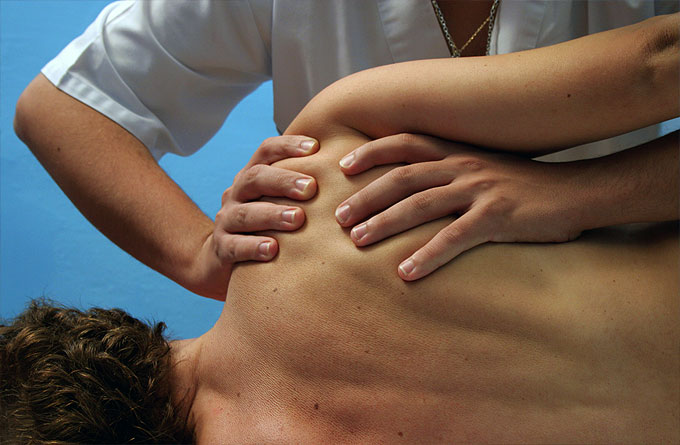
If you’re wondering which type of Osteopathy is right for you, a highly trained Osteopathic manual therapist like Chloé Sardin will have these various styles of Osteopathic treatment in her toolbox and will be able to determine which type of treatment is appropriate in your situation.
Osteopathy for Kids and Babies
Kids and babies can benefit from Osteopathy just as much as adults. In fact, because their bodies are young and so full of health, they can experience spectacular recoveries.
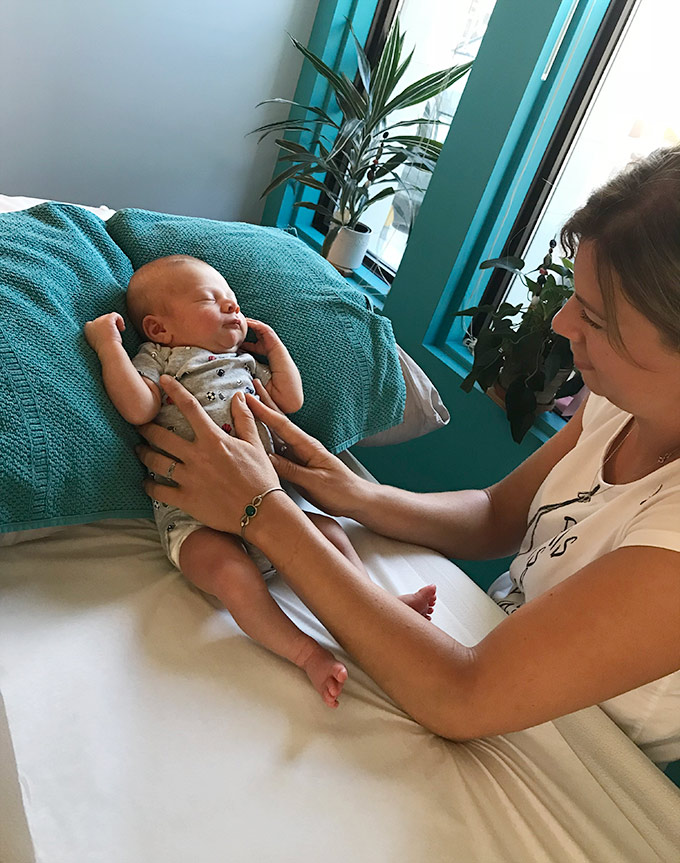
Babies and Osteopathy
In their first couple of months, babies can have problems that we treat:
- Sleep problems
- Compartmental issues: hyper excitability, constant crying, apathetic, high sensitivity
- Digestive troubles: regurgitations, colic, gas, trouble latching, being fussy after eating
- Skull shape abnormalities: asymmetry in the shape of the head or face, plagiocephaly (a flat spot on the back of their head)
- Blocked tear duct
- Posture: Back arching, or throwing their head backward, side bend in their body (banana shape), favouring head rotation or the use of one leg or arm
- Ear, throat, nose, or lung infections
- Traumatism: falls (especially when they start walking)
Also, certain types of deliveries make osteopathy a likely candidate for lending them a hand:
- Long deliveries (more than eight hours), or short deliveries (less than two hours)
- Induced deliveries
- The use of forceps or a vacuum during delivery
- C-section deliveries
- Twins!
- Premature babies
- Having the umbilical cord wrapped around the neck during delivery
- The use of force on the mother’s belly to get the baby out
- Breach babies
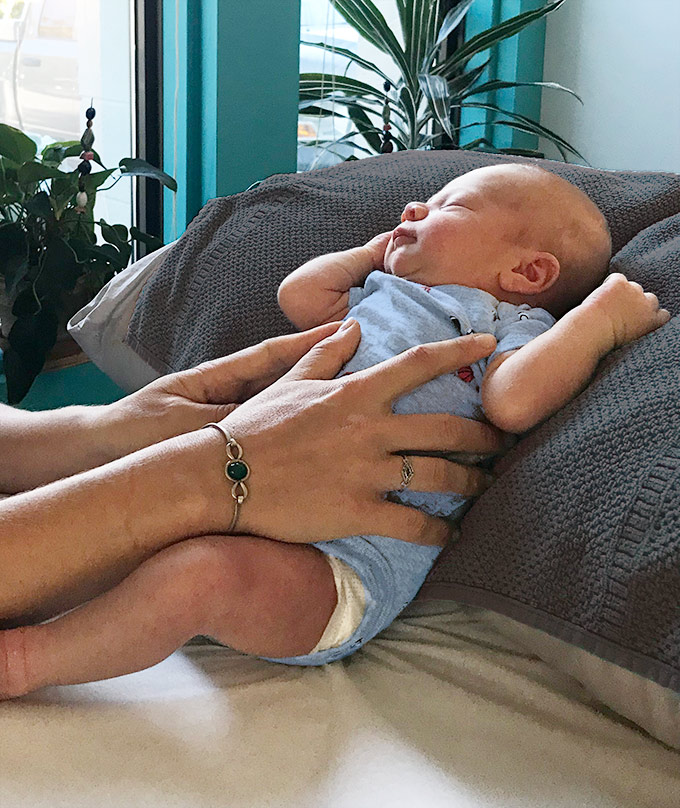
Babies will manifest their discomfort by excessive crying or screaming.
An Osteopathic manual therapist uses very gentle hands for techniques on the baby’s body and head to relive his physical symptoms and assess the zones of restriction of mobility. Sometimes, the treatment is so subtle that it will look as though the practitioner isn’t moving her hands, while your baby is lying down or sitting up, being treated.
Often babies are quite sleepy after a treatment.
Some common questions we are asked:
Q: When can I bring my baby?
A: You can bring your little one as early as you want. It is actually better to bring them early on. Did you know that Osteopaths treat right in the hospital in some countries? They do this in order to treat immediately after the birth and set them on the right path from the very beginning.
Q: Is there anything I need for the day of the treatment?
A: Yes, we need you to put on your best entertainer costume: bring some toys and maybe some snacks to keep your little one occupied. During the treatment, we need to make sure they stay busy.
Q & A: Can Osteopathy help my baby sleep better?
Q & A: What can Osteopathy help my baby with?
Q & A: How do I know if my baby could benefit from Osteopathy?
Q: My baby’s head has a flat spot. Can Osteopathy help with this?
A: Yes, this is called plagiocephaly, and I wrote an article all about how plagiocephaly occurs in babies.
Osteopathy for Kids
When your little ones grow up and become kids, we can help with:
- Growth and postural problems
- Walking issues
- Pain and chronic conditions
- Dental and orthodontic follow up
- (and the ones already mentioned above for babies)
In addition to bringing your kids for treatment when they suffer falls, it’s a good idea to bring them in for a Osteopathic checkup once a year to follow up on their growth and development. Your Osteopath will get to know your child’s body well enough to see new, emerging adaptations in their young bodies that can be corrected early on.
These are two articles I’ve written about Osteopathy for kids:
- Bronchitis, Bloatedness, Eczema, and Pirates: The Story of Emunctories
- Your Child’s Asthma/Eczema/Allergies might be Related to his/her Intestines
One of my patients shared this on her social media (apologies for the awkward angle, I promise: I do have a head!)
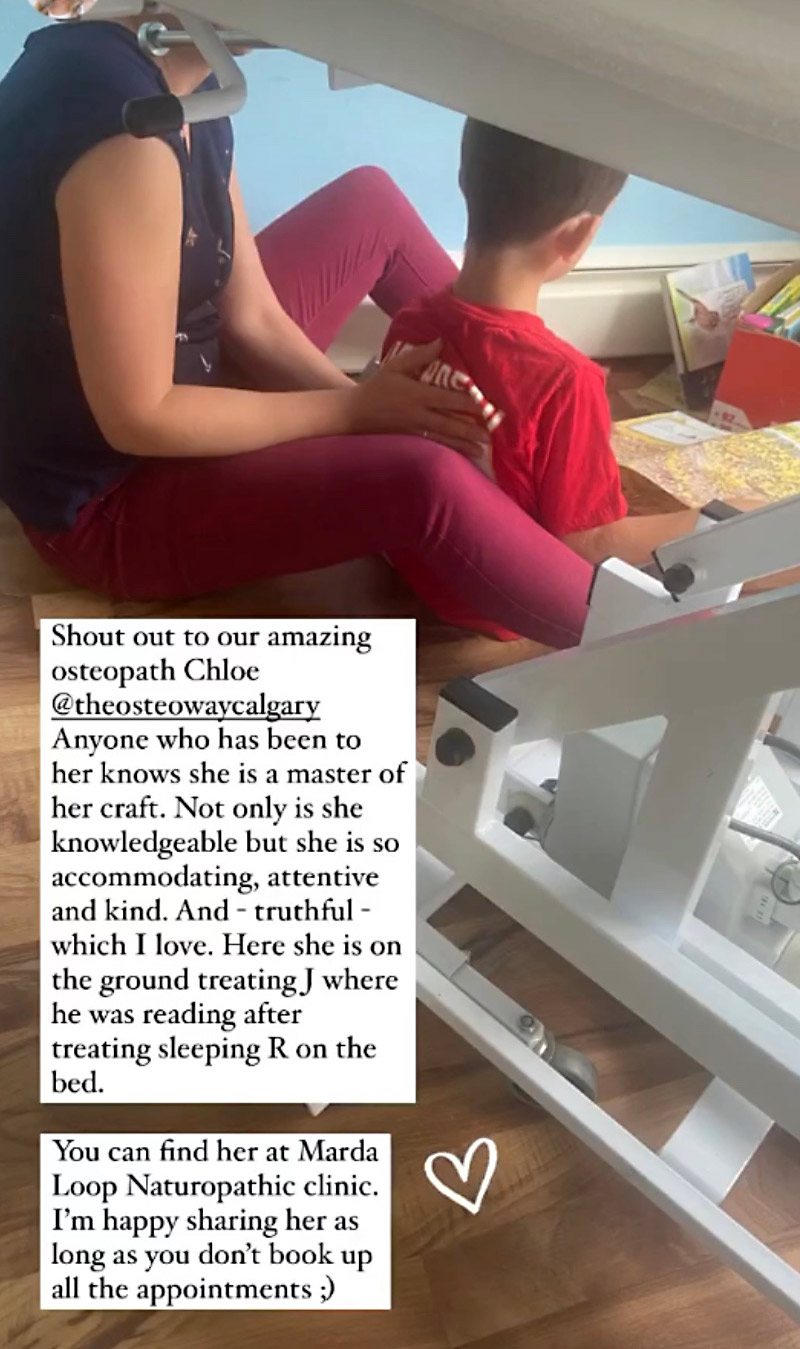
Osteopathic therapist Chloé Sardin excels at treating babies and kids. You can book an appointment with her here.
Osteopathy During Pregnancy
Before you even get pregnant, an Osteopathic manual therapist can make sure your body is mechanically ready, by checking the different systems necessary for conception. We will also make sure that stress is not an obstacle to creating life.
During the pregnancy, the numerous changes in your body can create discomfort. The Osteopathic manual therapist will help your body to gradually adjust to these modifications.
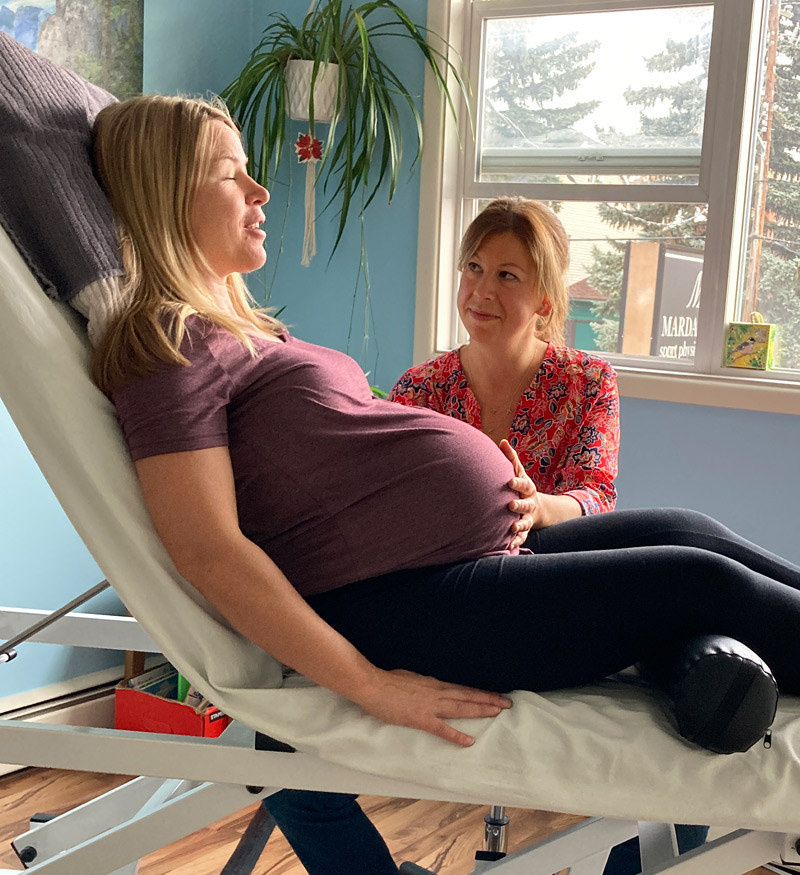
- Pain: In the lower back, in the ribs, in the tail bone, sciatica
- Digestive disturbances: reflux, nausea, constipation
- Migraines and headaches
- Blood congestions: heavy legs, heaviness in the pelvis, hemorrhoids
- Shortness of breath
The treatment will consist of gentle techniques working on the bones, muscles, ligaments, the organs, and connective tissues that surround the baby. This is why we are sometimes able to help with baby malpositions.
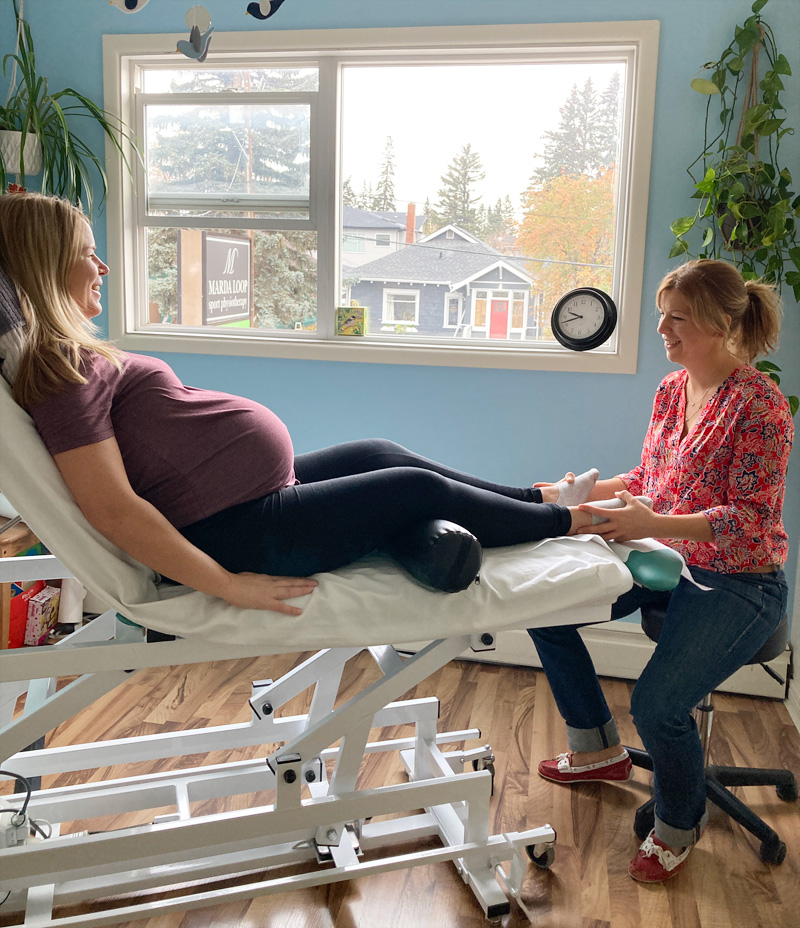
Ideally, it’s good to come about five to seven days before your due date or before when you think you will give birth depending on your past pregnancy experiences.
After the delivery, your body is going to work hard to find its balance and restore your posture. We can help you through this transition.
- Scars: C-section, epidurals, episiotomy
- Tailbone pain
- Weak pelvic floor
- White line separation
- Baby blues
These are three articles I’ve written about Osteopathy during pregnancy:
- Female Infertility Is More Than A Gynecological problem: An Osteopath’s Holistic Perspective
- Postpartum Anxiety: A short story about Birth and Worrying
- Scar Tissue (C-sections) and French Pastries have more in common than you probably think!
To get a better idea of how Osteopathy can assist pregnant women, it’s a good idea to read Lavina’s account of exactly how Osteopathy took care of the back pain and headaches she was experiencing on a daily basis during pregnancy, when chiropractors and massage therapists were only able to give her a few days of temporary relief.
If any of the above listed symptoms apply to you, or you have any questions about pregnancy and Osteopathy, give us a call at (403) 910-1133. Alternatively, you can send us an email at info@theosteoway.ca.
Osteopathy for Athletes
Did you know that athletes around the world–including Canadians–have Osteopaths following them?
But don’t worry: you don’t have to be a pro to benefit from Osteopathy: sports at any level are very demanding for the body, and any restriction of mobility of the joints, muscles, ligaments, and viscera can interfere. It will manifest differently for every athlete from a muscle spasm, to tendinitis, or having an impact on their performance.
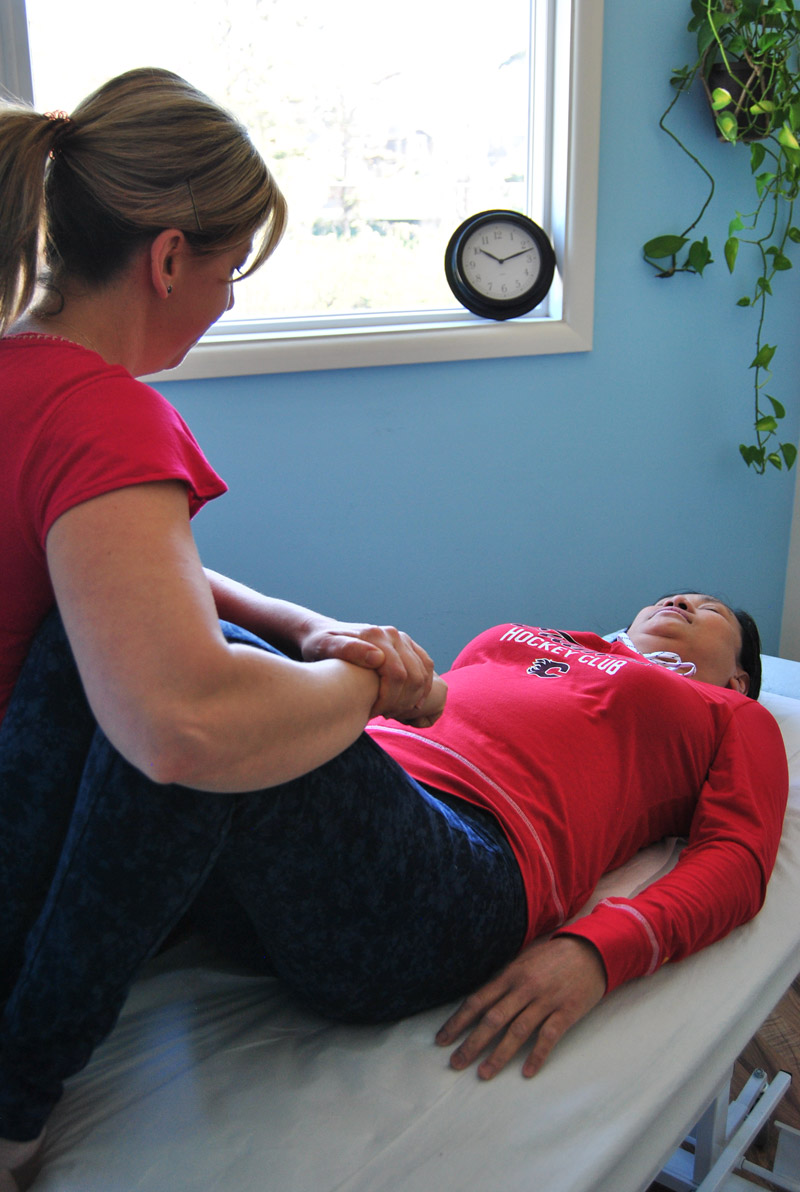
Some factors will also play a role in their injuries and will make injuries more likely to happen:
- Impact sports
- Fast changes of directions
- Quick take off
Sports that require endurance, that need to be efficient mechanically and energetically, are also demanding for the body.
Osteopathy will allow you to:
- Prevent some injuries, if you follow up with your Osteopathic therapist throughout the season to ensure your body stays in good shape
- Prepare your body for exercises (increase the muscular power, the range of motion of the joints, increase flexibility, and respiratory capacities) by treating the imbalances, which will boost your performance.
- Release pain and help recovery after fractures, sprains, surgery, or traumas.
Lots of people underestimate the importance of a slow gradual reintroduction back to their activity, which can lead to a recurrence of the first injury, or a new injury. An Osteopathic manual therapist will help your body to recover faster, and help with a plan to get back into your sport.
After a trauma or fall, the earlier you can see your osteopath, the better, so that your body doesn’t overcompensate in different parts and cause even more problems later on.
Kids are also involved in many activities. We can help their body grow and perform well at the same time, which will allow them to follow their passion all the way into adulthood.
Q: Should I come right before my competition?
A: Ideally, you want to give your body two to three days before the competition in order to let your body get used to its new state of balance.
Q: Can I practice my sport right after the appointment?
A: For the same reason mentioned above, you want to give your body at least a day to get used to its new balance and mobility.
Osteopathy for Seniors
As the body changes through the years and stiffness makes everyday tasks more difficult to perform, Osteopathy aims to restore mobility and quality of life.
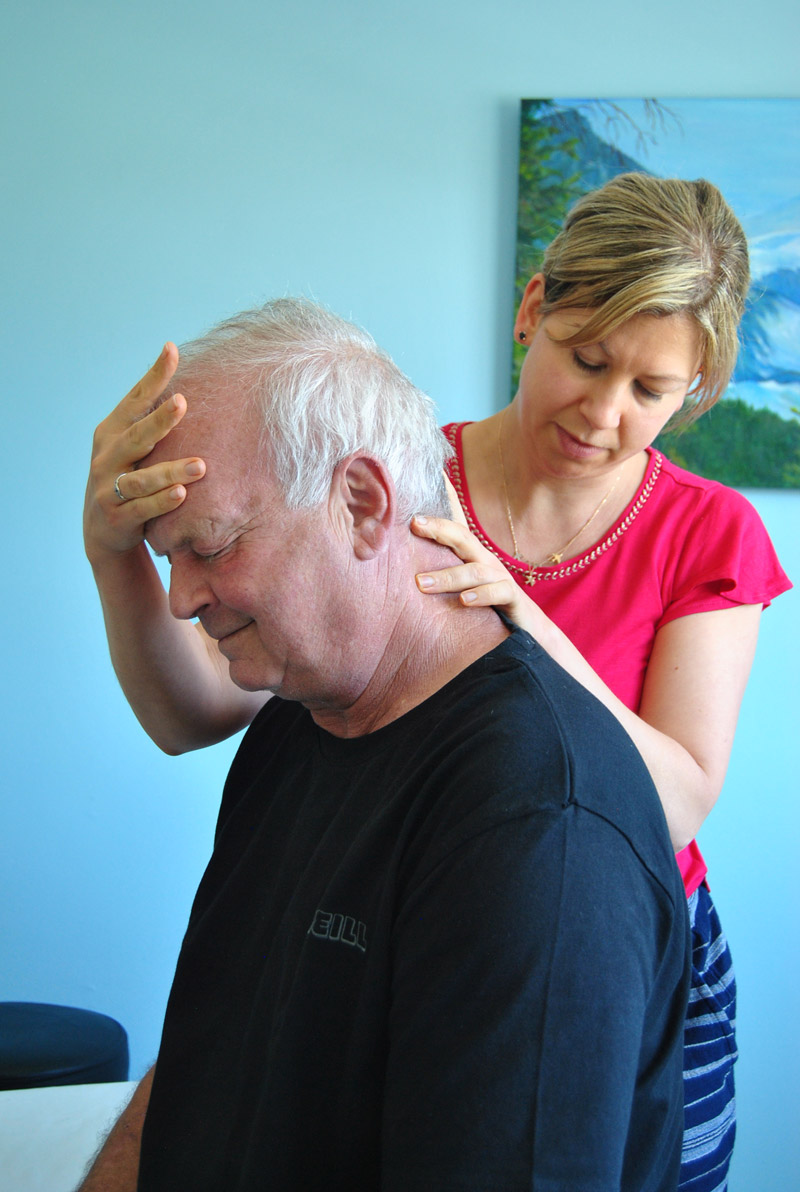
Through advice and exercises, we will try to ease the discomfort experienced.
We can help you with:
– Pains in joints, muscles, or with arthritis
– Restrictions of mobility
– Digestive trouble
– Sleep problems
Obviously, there is no correct age to begin taking care of your body: the earlier you start, the higher your quality of life will remain for a longer amount of time. But even if Osteopathy can’t make you younger, it can help you with your mobility and with reducing the discomfort that comes with aging.
